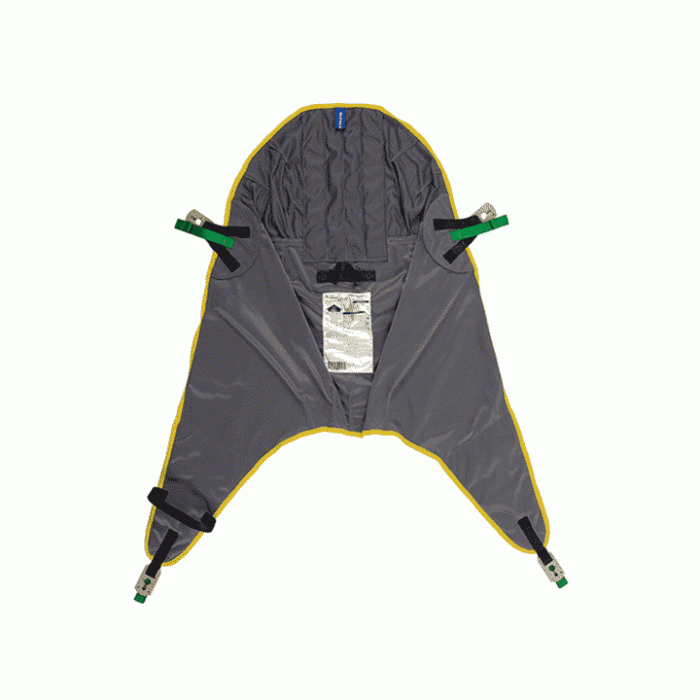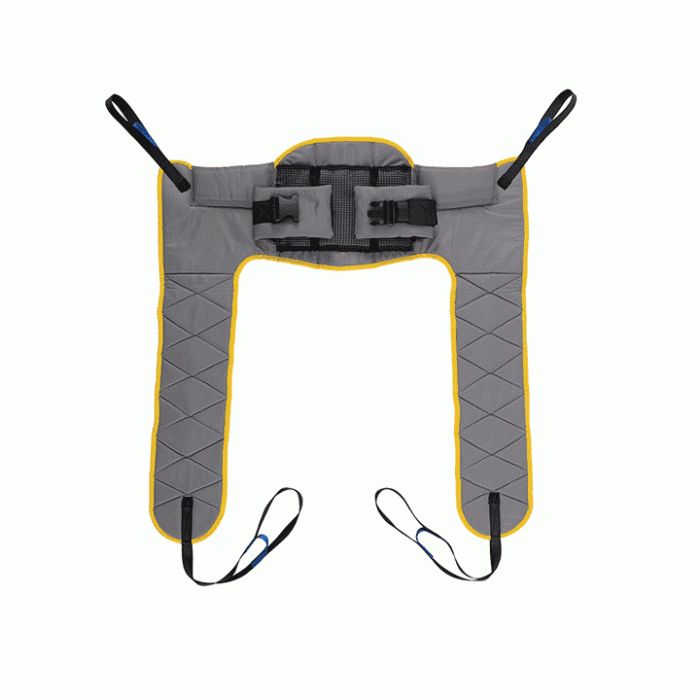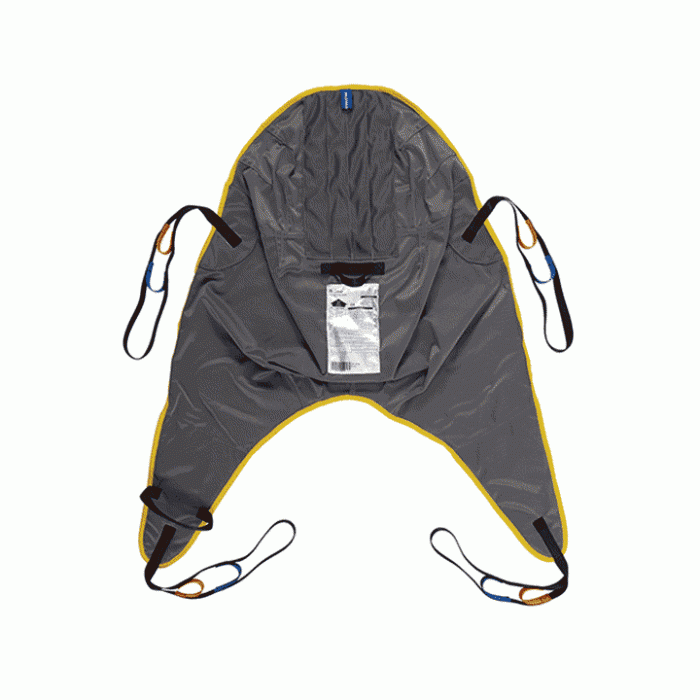
Slings, like hoists, come under the LOLER regulation 1998, which means they need to be visually inspected every 6 months by a competent person. However, a lot can change with slings within 6 months especially in a high usage environment, so it’s important for the carer carrying out the transfer, to visually inspect the sling before each moving and handling transfer is made.
Watch the sling safety checks video, download the poster for your care facility and read the blog to learn all you need to know about patient sling checks before use.
Patient Sling Checks Before Use
1. Check the sling has been LOLER inspected within the last 6 months
 Before using the sling, you need to check the service label or tag and if it is in date. Slings come under the LOLER regulation and so should be inspected every 6 months. Different service and maintenance providers have different processes for sling inspections.
Before using the sling, you need to check the service label or tag and if it is in date. Slings come under the LOLER regulation and so should be inspected every 6 months. Different service and maintenance providers have different processes for sling inspections.
At Medaco, we use different coloured tags that are put on the sling in a convenient place so that it doesn’t affect the use of the sling. We also provide customers with a colour chart for quick and easy reference as to which slings are within their 6-month inspection date and which ones are out of compliance. Commonly, slings can be missed during a PPM visit, this is either due to it being in use, in the laundry, it can’t be found, or it was purchased after the last service visit. Therefore, it is important to check every sling before every use and not rely on other slings by association.
2. Check the label is legible
 Under the LOLER regulation, it is a legal requirement that each sling has a label identification which includes essential information such as size, safe working load, unique serial number, and care instructions. This information needs to be readable on the label otherwise it should not be used.
Under the LOLER regulation, it is a legal requirement that each sling has a label identification which includes essential information such as size, safe working load, unique serial number, and care instructions. This information needs to be readable on the label otherwise it should not be used.
If you find that your printed sling labels fade in the wash, you might also face the challenge of useable slings being condemned, under the LOLER regulation, by your service and maintenance provider. Consider investing in patient slings with woven labels. Oxford slings from Joerns Healthcare are designed and manufactured with a woven label to solve this challenge. Important information is stitched rather than printed which reduces the likelihood of the label information washing out, even at high temperatures. This extends the lifespan of your sling, avoids downtime for users if a sling is condemned and saves you money on sling equipment replacement costs.
3. Is all the stitching intact?
The nature of a patient sling is to carry and support a person throughout a transfer. This puts the sling under a lot of stress and pressure. Before each use, make sure that you check the stitching of the sling to make sure it is intact. You should pay special attention to the high-stress areas such as the loops or clip fixings as this is where they can start to come apart. If this happens, you must not use the sling as the safety and integrity have been compromised.
4. Are there signs of wear and tear?
In busy care environments, slings can receive heavy use which puts them at risk of being worn through quickly. Before using the sling on your patient or resident, make sure you check the main body of the sling, as well as the legs to see if they are showing signs of fraying or wear such as nicks or cuts. Sometimes the sling material can get holes in from being caught on furniture or other equipment, if you hold it up to the light, it will help you to spot these.
5. Check the straps and belts are working 100%
Some patient slings come with buckles or Velcro straps. You need to check these are working 100% before using the sling on the user. If left undone, Velcro straps can gather fibres and lose effectiveness, making them weakened. With buckles, make sure there are no loose parts that stop it from working or could harm the user.
6. Check for signs of excessive heat or stress
Patient slings should be washed frequently, especially at a time when infection control is high on everyone’s agenda. However, washing and tumble-drying slings at high temperatures can cause heat exposure and stress to the fabric of the sling. Clothes dryers, for example, can make the fabric of the slings go brittle and the internal padding can shrink. Make sure that slings are washed per their care instructions on the label and check for any signs of damage before each use.
Patient slings are crucial pieces of equipment for care environments to enable users to be mobile and safe. So, you need to make sure you are carrying out these simple checks before every transfer to ensure it is safe to use. If you are unsure about the condition of your sling, you should take them out of service and get in contact with your service and maintenance provider. Find out more about our service and maintenance contracts which includes LOLER inspections on slings.
Buy Patient slings Online
Medaco supply a range of slings including general-purpose, full-body, bathing, all-day and disposable slings with both clips and loop fixings. For popular slings in stock, we can deliver these to your care home the next working day*.
*Next working day delivery is made Monday-Friday and orders must be placed online before 2 PM Monday-Friday. For example: If an order is placed on Friday before 2 PM, it will be dispatched that day and delivered the following Monday. If an order is placed after 2 PM on a Friday, then it will be dispatched on the following Monday and delivered on Tuesday. See here for more information on Medaco’s delivery times and rates.














